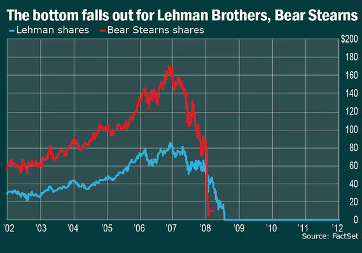There Are Two Sides to Rapid Change
“When there’s change, there’s danger. And when there’s change, there’s opportunity.”
“American higher education is experiencing more dramatic change than perhaps any time in the last several hundred years,” explained one college president who didn’t mince words about the scope of disruption. The president at another school put it this way: “The tectonic plates are shifting beneath higher education. That’s a huge threat to all of us.” With uncertainty from the effects of executive orders, economic instability, and a nascent AI industry, these sentiments are shared by many throughout higher education.
While writing Capitalizing on College, I had candid conversations with dozens of leaders at tuition-driven institutions. Every long-serving leader reflected on the financial collapse and ensuing recession of the early 2010s when universities faced extraordinarily difficult decisions. While universities with sufficient endowments could “buffer” the blunt impact of economic turmoil, these tuition-driven schools had to think––and act––quickly to secure a sustainable future for their constituents and their missions.
Some leaders I interviewed emphasized inward cost-cutting and increasing efficiency, while others looked outward to expanding and claiming a greater share of their market––or developing new markets entirely. What can we learn from how these leaders navigated earlier financial crises in higher education? The words of one university executive made the lesson plain, “When there’s change, there’s danger. And when there’s change, there’s opportunity.”
Lessons from the Great Recession
The end of the 20th century had brought national policy changes that increased reliance on student financial aid to secure per-student federal funding, as well as widespread privatization in higher education. These changes had increased market competition, thereby increasing pressures on tuition-driven schools to maximize their financial margins through innovation. Unlike the elite echelon of American colleges and universities with endowments large enough to weather the ups and downs of a volatile market without much intervention, tuition-driven schools faced accumulating challenges of keeping their doors open while meeting institutional missions. And then the Great Recession hit in October of 2008.
A president I spoke with vividly recalled the moment: “It was a week or so before our board meeting… [and] the stock market lost half its value.” He recollected the sense of dread as he watched a bipartisan White House press conference addressing the global financial meltdown: “As good as politicians are at masking, it was written all over their face. I mean, I remember looking at them saying, ‘Holy s***, this is really serious.’”
The issue boiled down to numbers. “Every student that walks across the graduation stage has got to be replaced for us to stay in business,” one vice president candidly acknowledged. For most, thoughts of adding more capacity were abandoned: another president reflecting on the era told me bluntly, “Our institution could not shift gears fast enough to find a way to keep the growth going.” Instead, the leaders of tuition-driven schools focused on defending their enrollment markets from the encroaching competition to maintain the same annual level of revenue.
Because costs continued to grow but enrollment had flatlined, executive teams turned to their already meager endowments. Annual financial yields of their endowments dwindled during the global recession, and a few leaders painfully recalled having to make withdrawals from the endowment capital.
“Now is the best time”
One approach that stood out among the sense of looming crisis enveloping tuition-driven schools was the president who described his presentation to the board in the aftermath of the Great Recession. He chose to see opportunity instead of danger amid the rapid change:
There was a slide with… Forrest Gump and Lieutenant Dan on the shrimp boat. You know, the only one that was out there…in the storm.
In the academy-award winning 1994 film, the titular character and his platoon-leader-turned-business-partner were the only fishing crew to sail into a hurricane instead of anchoring in the harbor. The risk paid off; while the rest of the local fishing industry was decimated by their “battening the hatches” philosophy, their approach launched them toward financial sustainability.
This president was driven by a belief that “if you really want to separate from your competition, now is the best time. Because most people are just going to hunker down and try and ride out the storm… If we’re smart – If we’re aggressive – we can make tremendous headway right now.”
While still recognizing the risk that had been involved, looking at a market that had just essentially frozen, he saw an opportunity to hire, especially within highly competitive disciplines. “Nobody was hiring. Let’s get the PhDs in accounting and finance, computer science, all the toughest disciplines.” He was quick to point to the results: “I may be as crazy as old Forrest, but it worked. And you know, we really gathered up a lot of shrimp… Our full-time faculty grew 50% during that period of time.” He pointed out that “in ‘good times’ we wouldn’t have been able to compete for most of those people.”
Writing Your Own Script
Today’s headlines about disruption in higher education differ in detail from past crises, but moments of rapid change remain constant: “Higher ed is changing, the market is changing, what the public wants is changing. To put it simply, we have [to be] more able to change and adapt quickly,” one vice president observed.
Schools that successfully navigate turbulent times do more than just react––they proactively adapt. To thrive, institutions must be willing to draw on lessons from past crises, while remaining nimble enough to realize opportunities and reimagine the way forward.
What remains vital amid moments of rapid change is where one focuses attention. What one administrator said then about his school applies widely today: “Whether we take advantage of the opportunity and avoid the dangers – that script is yet to be written.”
In the spirit of focusing on opportunity amid rapid change, I offer three ideas for future-thinking administrators to consider:
Organize for agility over rigidity. Senior management teams should build flexibility into their decision making and operations processes that allow them to pivot when a policy quickly changes or new enrollment opportunity arises. One university in Capitalizing on College had an international team that was quckly dispatched abroad upon receiving approval from a foreign country to create a new branch campus, an approach that enabled them to begin building a network of sites across Latin America and Asia. Closer to home, others have advocated that colleges must “be nimble and provide training programs that respond to the labor-market needs of their region.”
Engage now with policy stakeholders. As the federal government seeks to shutter the Department of Education (ED) and move oversight to states, savvy institutional leaders must begin strengthening relationships with state and local policymakers now. University leaders should become involved in associations like the State Higher Education Executive Officers (SHEEO) and stay abreast of policy developments across states via their quarterly policy review. Most importantly, because Department of Education functions will be dispersed, college and university presidents must identify firms with insider knowledge about how things work at the Department of Health and Human Service, Department of Commerce, Treasury Department, Department of Justice, and the State Department. Each of these agencies will likely inherit portions of the ED and presidents will no longer have a “one stop shop,” forcing them to work across agencies to get things done. For presidents of institutions unable to afford to hire a firm, they should utilize key alumni with these types of connections.
Be a value entrepreneur. Embody your values creatively in ways that challenge the status quo, or even stand up to power. Georgetown Law recently cited their Catholic and Jesuit beliefs in response to new federal DEI restrictions, using the logic of religious freedom to challenge the logic of the state. Universities that successfully navigate this moment of rapid change will not react impulsively, but will instead innovatively find new ways of standing for mission.
Extra Edge:
Issue Soundtrack: Cover of “It’s the End of the World as We Know It” by Pomplamoose, featuring dodie and Maddie Poppe.
Available Now: The Kindle & Goodreads versions of Capitalizing on College dropped early!!! For those who prefer eBooks, you can get yours at my website.
Around the Corner: From resource sharing and collective problem-solving to reframing longstanding narratives within higher education, I suggested a few ways forward for tuition-driven institutions in my last Substack article. What are some ways forward that you see? Let me know your ideas via Substack, LinkedIn, X, or my website.
Ready to Launch: My book, Capitalizing on College, is being released on April 9th and I am inviting you to take part in the celebration! We will be hosting an online launch on LinkedIn Live at 1:30p EST that I would love for you to join. Use this link to RSVP and join when the time comes!
Let’s Connect: Please drop me a note on Substack, LinkedIn, X, or my website if you are interested in the “other 99%” of colleges and universities, or to tell me what you are reading and why. I would love to hear. You may see your name/suggestion here in a future issue.






